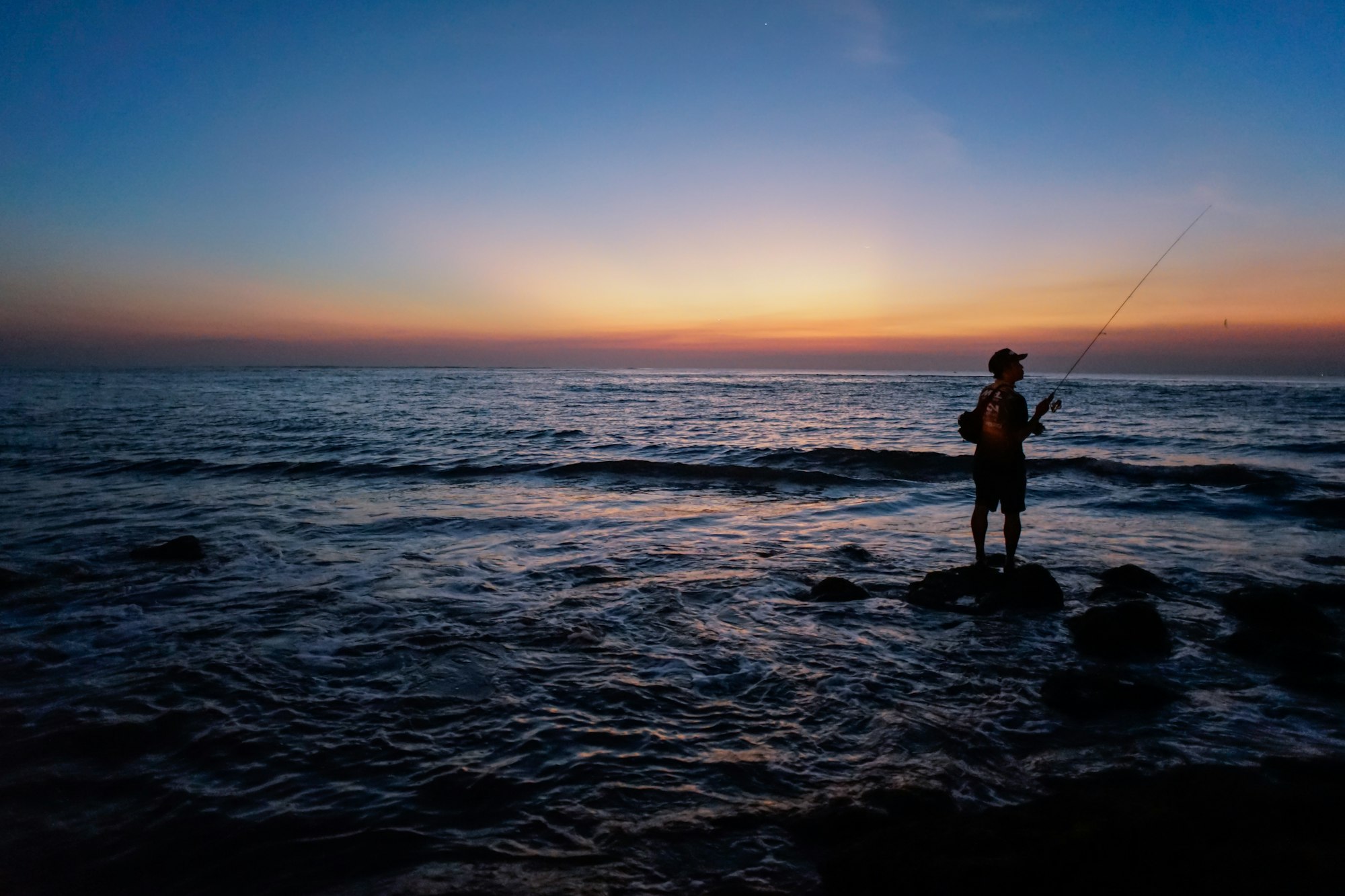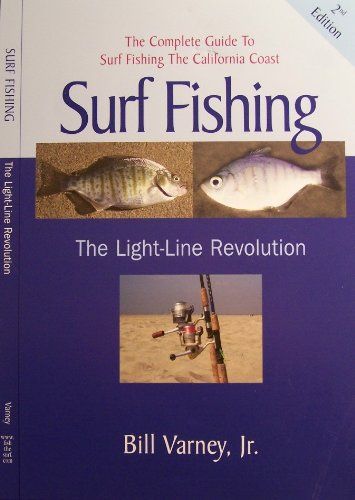Cast Away: A Comprehensive Guide to Mastering the Art of Surf Fishing
Surf fishing is a popular and rewarding sport that combines the thrill of angling with the beauty of the beach. Whether you’re a seasoned angler or a beginner, this guide will provide everything to make your surf fishing an enjoyable and rewarding experience.
Picture this: You're standing on a pristine beach, the salty breeze in your hair, and the sound of crashing waves filling your ears. Your rod is in hand, and you're ready to cast your line into the great unknown, where a world of incredible fish species awaits.
Welcome to the thrilling adventure of surf fishing! If you're ready to take on this exciting challenge and reel in the catch of a lifetime, read on to discover the secrets of success in the surf.
Surf fishing is an exhilarating sport that combines the beauty of the shoreline with the thrill of the hunt. But to master this unique form of angling, you must arm yourself with the proper knowledge, gear, and techniques.
This comprehensive guide covers everything you need to surf fish with a resounding success.
Understanding Surf Fishing: What Is It and Why Is It So Popular?
Surf fishing is a popular form of mostly saltwater fishing that involves casting your line from the shoreline, typically into the ocean or sea, intending to catch fish that inhabit the surf zone.
It is one of North America's most popular forms of recreational angling, especially along coastal regions with expansive beachfront like Florida, California, New Jersey, and Delaware.
One of the main reasons for its popularity is its unique combination of relaxation and challenge, allowing anglers to enjoy the beauty of their surroundings while testing their skills against the ever-changing conditions and unpredictable nature of the surf.
With its accessibility to multiple species of active fish, including striped bass, bluefish, and red drum, surf fishing has attracted anglers worldwide seeking challenging catches against stunning backdrops. Some travelers even plan entire vacations around surf-fishing destinations.
In addition to being a fun hobby for individuals or groups, competitive surf-fishing tournaments offer additional opportunities for enthusiasts to test their skills against others while enjoying camaraderie with fellow anglers.
Choosing the Right Gear
Whether you're a seasoned fisherman or just starting, having the correct surf fishing gear is crucial for a successful and enjoyable experience.
Essential Equipment: Rod, Reel, Line, and Terminal Tackle
Before hitting the beach, make sure you have the following essential gear for surf fishing:
- Rod: Surf fishing rods should be longer and more robust than your average freshwater fishing rod. This allows you to cast further into the surf and handle larger fish species. Look for rods between 9 to 14 feet in length.
- Reel: Surf fishing reels come in spinning and conventional styles. Spinning reels are typically easier to use and are preferred by beginners, while traditional reels offer more control and are favored by experienced anglers.
- Line: A braided line is recommended for surf fishing due to its strength, durability, and low stretch. Choose a line with a test strength appropriate for your target fish species.
- Terminal Tackle: This includes hooks, sinkers, swivels, and leaders. Opt for corrosion-resistant materials like stainless steel to withstand the saltwater environment.
Bait Options Including Live Bait, Cut Bait, and Artificial Lures
Several bait options are available when surf fishing, including live bait such as sand crabs or bloodworms, which can attract many fish species like perch or croaker.
- Cut bait such as squid or anchovies can also be effective as it releases scent into the water, attracting fish from far distances.
- Artificial lures like crankbaits or spoons are also popular among surf fishermen who enjoy a more active approach to surf fishing. These lures mimic the movement of bait fish in the water, often enticing predatory fish species such as striped bass or bluefish.
To find what works best for you, it’s essential to experiment with different baits based on the time of day and seasonality changes.
Waders or Boots for Accessing Deeper Water
Sometimes accessing deeper water while surf fishing can be challenging, which is where waders or boots come in handy.
- Waders are waterproof pants allowing you to walk out further into the water without getting wet. There are two main types of waders: boot foot waders and stockingfoot waders.
Bootfoot waders have built-in boots, while stockingfoot waders require separate wading boots to be worn over the neoprene socks on the bottom of the pants. Both options can work well for surf fishing, but stockingfoot waders tend to provide more flexibility in terms of mobility.
- Waterproof boots with good traction can help keep your feet dry while providing stability and grip on uneven terrain.
Whatever option you choose, ensure they are comfortable and fit properly to avoid discomfort or safety issues while fishing in rough waters.
Factors to Consider When Choosing Your Gear
When selecting surf fishing gear, keep these factors in mind:
- Target Species: Your target size and type of fish will influence your rod, reel, and line choice. For example, if you're after large game fish, you'll need a more robust and heavier setup than targeting smaller species.
- Location: Different surf fishing spots may require specific gear. For instance, rocky shorelines might call for a longer rod to cast over obstacles, and a monofilament line will be a better choice to protect against abrasion. At the same time, sandy beaches may not require as much distance.
- Personal Preferences: Your skill level, budget, and preferences will also affect your gear choices. Beginners may prefer user-friendly spinning reels, while experienced anglers might opt for conventional reels with more control.
Recommendations for Beginners and Experienced Anglers
Here are some recommendations to help you choose the right surf fishing gear:
Beginners surf fishing:
- Opt for a medium-length (10-12 feet) surf fishing rod with moderate action for versatility and ease of use.
- Choose a spinning reel with a large spool capacity to accommodate a braided line.
- Start with a braided line of 20-30 lb test strength to balance power and castability.
- Select basic terminal tackle like circle hooks, pyramid sinkers, and barrel swivels.
Experienced Anglers:
- Consider investing in a high-quality surf fishing rod with a fast action for increased casting distance and sensitivity.
- Explore conventional reels with features like adjustable braking systems for increased control.
- Experiment with different line strengths and types to find the perfect balance for your target species and conditions
- Upgrade your terminal tackle with premium materials and specialized components like surf fishing rigs and shock leaders.
- Master different rigging setups, be it a heavy fish finder rig or a light float rig.
Finding the Right Spot

Now that you have the right gear for surf fishing, it’s time to find a suitable spot.
Understanding tides and currents to locate fish
One of the keys to successful surf fishing is understanding how tides and currents impact fish behavior. As the tide rises and falls, it can push baitfish and other food sources along with it, attracting larger predatory fish.
Conversely, a high tide may push fish closer to shore, where they are more easily accessible, while a low tide may force them further out.
Currents can also play an essential role in locating fish. Strong currents usually occur around points of land or jetties with a concentration of baitfish. These areas often hold large numbers of predatory fish looking for an easy meal.
Identifying structures such as sandbars or troughs where fish may congregate
Another key to finding the right spot for surf fishing is identifying areas with underwater structures that attract bigger fish too. Sandbars, troughs, and drop-offs are all examples of structures that can hold baitfish and attract larger predatory species.
Sandbars create channels of deeper water between them that serve as travel routes for both baitfish and predator species. Troughs are areas where the ocean floor dips down between two sandbars, creating deeper water where predators like to hide and ambush prey.
Researching local regulations on beach access and fishing restrictions
Before you head out on your surf fishing adventure, it’s essential to research any local laws that may impact your experience. Some beaches may have specific rules about when you can access certain areas or what types of gear you’re allowed to use.
Be sure to check if there are any closed seasons for specific species or any size limits on catches in your area. It’s always better to be informed ahead of time so you don’t accidentally violate any rules or cause damage to local ecosystems.
Be patient
Remember that finding the right spot for the best surf fishing experience can take time and patience. It’s essential to keep your eyes open for signs of fish activity, such as birds diving into the water or fish jumping out of the water.
As you gain more experience with surf fishing and become familiar with your local area, it will become easier to identify the best spots for a successful day on the water.
Techniques for Surf Fishing

Whether new to the sport or looking to up your game, mastering surf fishing techniques is critical to reeling in more fish and making the most of your time on the shoreline.
Casting Techniques to Maximize Distance and Accuracy
Casting is crucial to surf fishing; getting it right can make all the difference in your catch.
- One way to maximize distance is to use a two-handed surf casting approach, known as the “spey” technique. This involves casting the line, with one hand holding the rod and the other pulling.
This technique allows for longer casts and greater accuracy. It’s essential to practice this method before hitting the water to get comfortable with it.
- Another strategy for casting farther is to use a lighter-weight bait or lure, creating less drag and allowing for a more extended cast. When using heavier bait or lures, ensure your rod has enough backbone to handle its weight without sacrificing casting distance.
- Pay attention to wind direction when surf casting to take advantage of tailwinds or avoid headwinds that impede your casts. Practice adjusting your casting angle based on wind conditions to place your line where you want it effectively.
Reading the Water to Detect Bites
One of the keys to successful surf fishing is reading the water effectively to detect bites from fish below. Look for current or tidal movement changes, indicating areas where fish feed or travel.
Another critical factor is identifying structures such as sandbars or troughs where fish may congregate, looking for food sources.
These areas often have varying water depths, creating turbulence that attracts small bait fish – and subsequently larger predatory fish – looking for an easy meal. When observing these areas, look for signs of activity, such as birds diving into water from above, indicating that they have spotted schools of bait fish below.
Setting The Hook Properly to Ensure a Successful Catch
Once you’ve detected a bite, properly setting the hook is crucial to ensure your catch doesn't get away. The key is in timing and technique.
Don't pull back immediately when you feel a tug on your line because it could hurt the hook out of the fish’s mouth. Instead, wait a second before gently lifting the rod to set the hook.
This will give the fish enough time to fully take in the bait or lure and trigger its natural feeding response. It's also important not to jerk too hard when setting the hook because this could lead to tearing through the fish's mouth or breaking off your line entirely.
Instead, use a smooth but firm pulling motion – almost like reeling in - until you can feel resistance from your catch.
Remember that setting the hook effectively is as important as casting and treading water for surf fishing success!
Tips for Improving Your Technique and Increasing Your Catch Rate
To elevate your surf fishing skills even further, some essential points that you should keep in mind are:
- Observe and Learn: Watch experienced surf anglers in action and learn from their techniques, casting styles, and lure choices.
- Practice Makes Perfect: Dedicate time to practicing your casting, retrieving, and hook-setting techniques, both on and off the water.
- Stay Adaptable: Be prepared to change your approach based on the conditions, target species, and bait availability.
To improve your techniques and learn a lot about Surf Fishing, read the following book :

Target Species
Common species caught while surf fishing
If you're heading out for a day of surf fishing, chances are you'll come across some of the most popular species that call the ocean home. These include striped bass, bluefish, and red drum. Each species has unique characteristics and preferences, which can help you hone in on your catch.
- Striped bass is a popular game fish found along the eastern coast of North America. They prefer cooler water temperatures and are often seen inshore during the spring and autumn.
- Bluefish are another popular species that can be caught while surf fishing. They tend to be more aggressive feeders and can be found in schools along sandy beaches or rocky shorelines.
- Red drum, also known as redfish, is another sought-after species that can be caught while surf fishing. They prefer shallower waters with plenty of structure, such as oyster beds or mangrove roots. Look for their distinctive tail or "spot" sticking out of the water as they feed on crabs and other small crustaceans.
Tips for targeting specific species based on their habits and preferences
To increase your chances of catching particular target species, consider these surf fishing tips:
- Research: Learn about the habits and preferences of the target species before heading out to fish for them.
- Bait: Different bait works better for different types of fish. For example, striped bass prefers live eels or clams, while bluefish use cut bait such as mullet or squid.
- Tides: Pay attention to tide changes because certain fish feed more actively during incoming or outgoing tides.
- Location: Different fish prefer different types of terrain, such as sandy beaches or rocky areas with structures like jetties.
By understanding each target species' patterns around feeding times, preferences, and locations for them, you increase your chances of a successful day of surf fishing.
Safety Considerations
Importance of Checking Weather Conditions Before Heading Out
The weather is one of the most important things to consider before heading out for a day of surf fishing. Checking the forecast can save you from unexpected storms or high winds that can make it difficult and dangerous to fish in the surf.
While a sunny day might seem perfect for a fishing trip, it's important to remember that conditions can change quickly near the water. Be sure to check the water-current conditions and any alerts or warnings issued by local authorities.
If there are any advisories for high waves or dangerous currents, it's best to postpone your trip until conditions are more favorable. Always err on the side of caution regarding weather and safety.
Tips for Avoiding Hazards Such as Rip Currents or Stingrays in the Water
When fishing in the surf, there are several hazards that anglers should be aware of. Rip currents can be especially dangerous, pulling swimmers out into deeper water and making it difficult to swim back to shore.
Check with lifeguards or other authorities about current conditions before entering the water. Another hazard that anglers should be aware of is stingrays.
These marine animals like to bury themselves in shallow water and may accidentally be stepped on by unsuspecting beachgoers. To avoid getting stung by a stingray, shuffle your feet along the ocean floor instead of walking normally - this will alert any nearby stingrays and give them time to move out of your way.
Always keep an eye out for other beachgoers while casting your line. Ensure you're not throwing near swimmers or people playing on shore; a stray hook could cause serious injury if it catches someone unexpectedly.
Avoiding Sunburn While Fishing
Fishing in the surf often requires spending extended periods in direct sunlight. To avoid painful sunburns, wear protective clothing like hats and long-sleeved shirts. Sunscreen is also a must and should be reapplied every few hours or after swimming or sweating.
It's also important to stay hydrated while fishing in the sun. Bring plenty of water to drink throughout the day, and consider bringing snacks with high water content, like fruit or vegetables.
Dealing With Insect Bites
Depending on where you're fishing, insects like mosquitoes and sandflies can be a significant annoyance. Be sure to bring insect repellent and apply it regularly throughout the day. Wearing light-colored, long-sleeved clothing can also help protect against insect bites.
If you get bitten, try not to scratch the affected area, which can lead to infection. Applying an ice pack or taking over-the-counter antihistamines may help reduce swelling and itching.
Conclusion
Surf fishing can be an exciting way to spend a day at the beach while bringing home some delicious seafood. Using the right gear and techniques, most surf fishermen can catch various species while enjoying nature's beauty.
And with these simple recipes for cleaning and cooking your catch, you'll have a flavorful meal that you can feel proud of.
So grab your rod and head to the shore - you never know what you might reel in on your next surf fishing trip!


